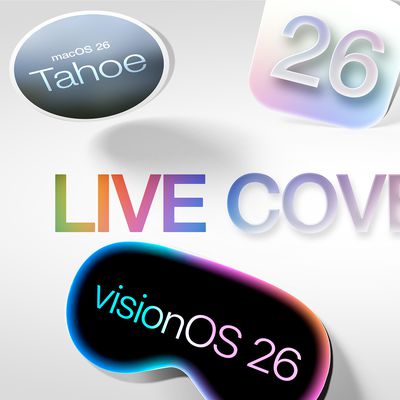Google's Chrome Browser Gets 'Highest Score Ever' on Speedometer Performance Test
Google today announced that its Chrome browser has received the "highest ever score" on the Speedometer 3 benchmarking test. Speedometer 3 is designed to measure browser performance, and it was created collaboratively by Google, Apple, Intel, Microsoft, and Mozilla.

The test is designed to measure web responsiveness through several workloads like HTML parsing, JavaScript and JSON processing, pixel rendering, CSS application, and more.
Optimizations that Google has implemented over the last year have brought a 10 percent improvement in performance since August 2024, which Google says leads to better browser experiences for end users.
The team heavily optimized memory layouts of many internal data structures across DOM, CSS, layout, and painting components. Blink now avoids a lot of useless churn on system memory by keeping state where it belongs with respect to access patterns, maximizing utilization of CPU caches. Where internal memory was already relying on garbage collection in Oilpan, e.g. DOM, the usage was expanded by converting types from using malloc to Oilpan. This generally speeds up the affected areas as it packs memory nicely in Oilpan's backend.
On an M4 MacBook Pro with macOS 15, Chrome 139 achieved a score of 52.35 on the benchmarking test. More detail on the optimizations that were added can be found in Google's blog post.
Apple has not recently shared its maximum Speedometer 3 test results for Safari so there isn't a direct comparison available, and it is worth noting that Google appears to have used Speedometer 3, and not the newer Speedometer 3.1 test.
Popular Stories
Apple's Worldwide Developers Conference (WWDC) starts today with the traditional keynote kicking things off at 10:00 a.m. Pacific Time. MacRumors is on hand for the event and we'll be sharing details and our thoughts throughout the day.
We're expecting to see a number of software-related announcements led by a design revamp across Apple's platforms that will also see the numbering of all of...
Apple is planning to announce several new features for the Messages and Phone apps on iOS 26, according to Bloomberg's Mark Gurman.
In a lengthy report outlining his WWDC 2025 expectations today, Gurman said that the two main changes in the Messages app will be the ability to create polls, as well as the option to set a background image within a conversation.
9to5Mac was first to report...
Apple today announced a complete redesign of all of its major software platforms called "Liquid Glass."
Announced simultaneously for iOS, iPadOS, macOS, watchOS, tvOS, visionOS, and CarPlay, Liquid Glass forms a new universal design language for the first time. At its WWDC 2025 keynote address, Apple's software chief Craig Federighi said "Apple Silicon has become dramatically more powerful...
While the so-called "iPhone 17 Air" is not expected to launch until September, there are already plenty of rumors about the ultra-thin device.
Overall, the iPhone 17 Air sounds like a mixed bag. While the device is expected to have an impressively thin and light design, rumors indicate it will have some compromises compared to iPhone 17 Pro models, including worse battery life, only a single ...
Apple's long-rumored AirTag 2 might be coming soon.
In his Power On newsletter today, Bloomberg's Mark Gurman briefly mentioned that a new AirTag is "nearly ready" to launch. Last year, he said that it would be released around the middle of 2025, and the midpoint of the year is just a few weeks away.
"The new AirTag is nearly ready, having been prepared for launch over the past several...
macOS 26 will drop support for several older Intel-based Mac models currently compatible with macOS Sequoia, according to a private account on X with a proven track record of leaking information about Apple's software platforms.
macOS 26 will be compatible with the following Mac models, the account said:MacBook Air (M1 and later)
MacBook Pro (2019 and later)
iMac (2020 and later)
Mac...



















